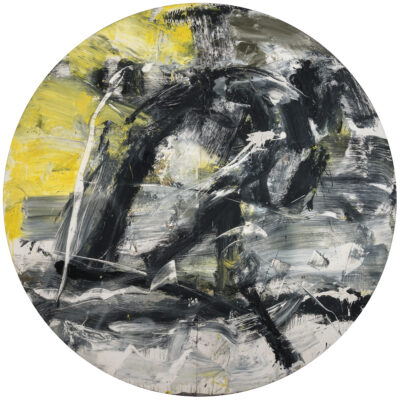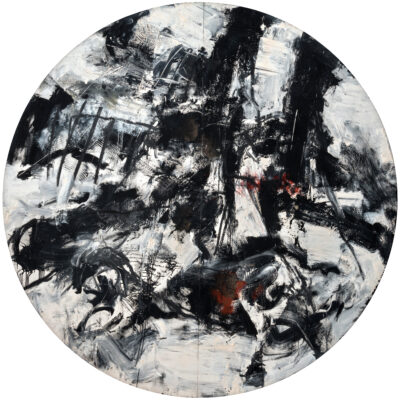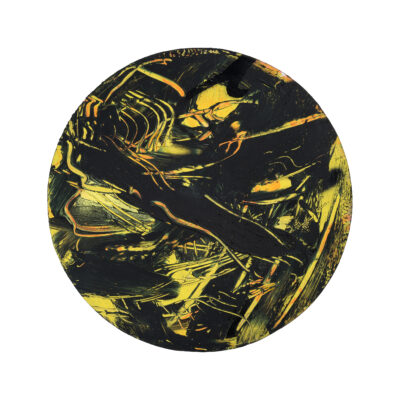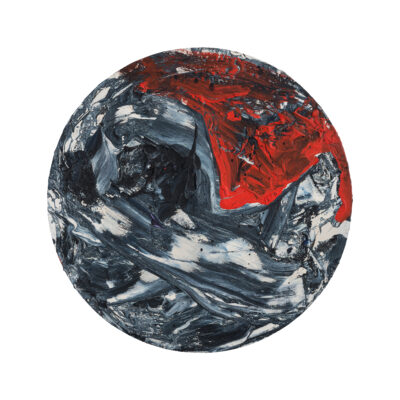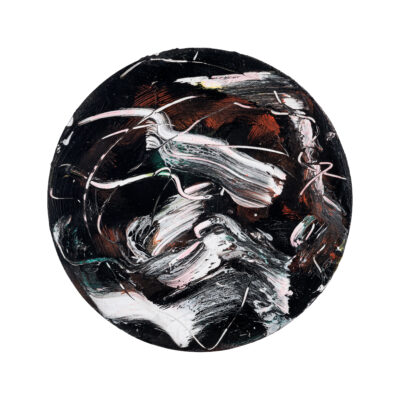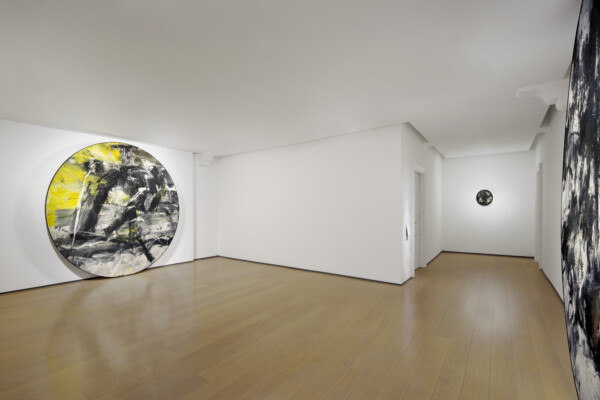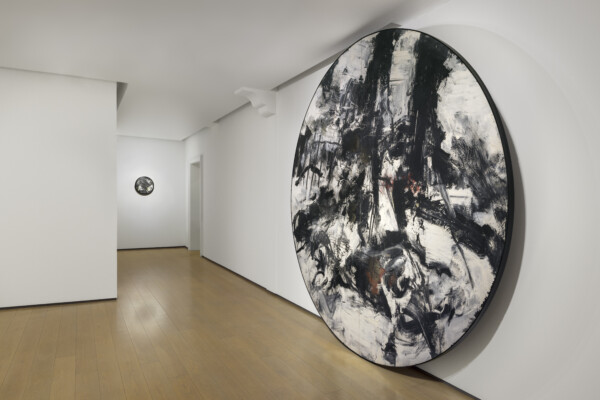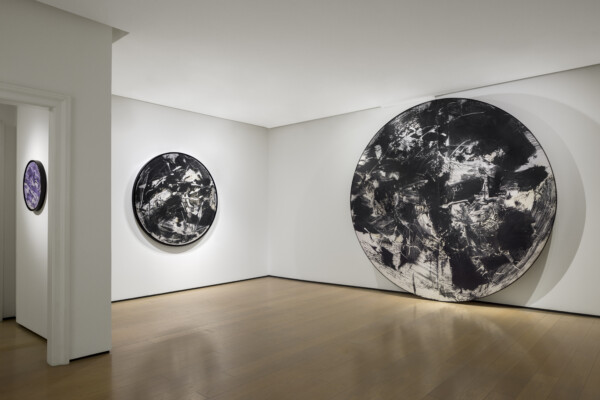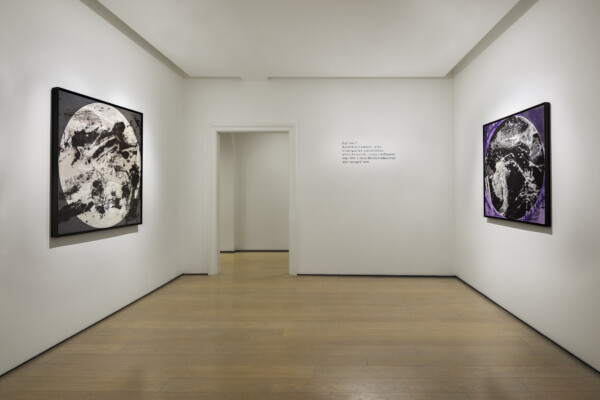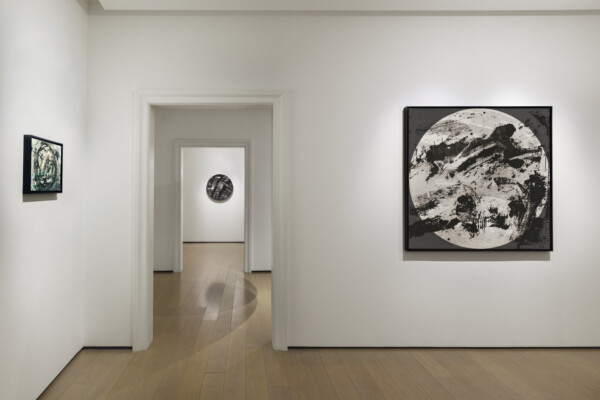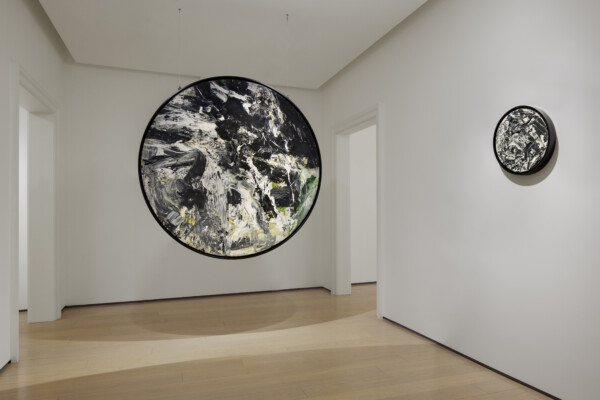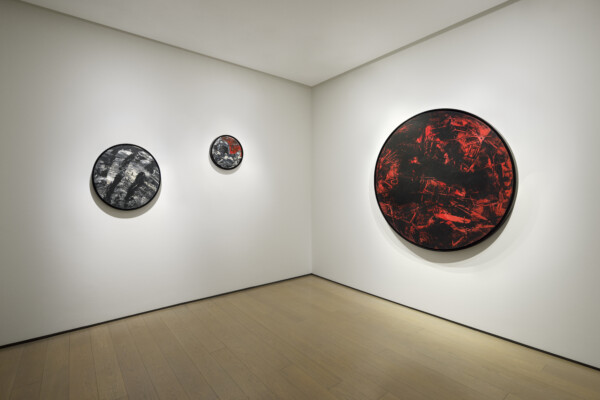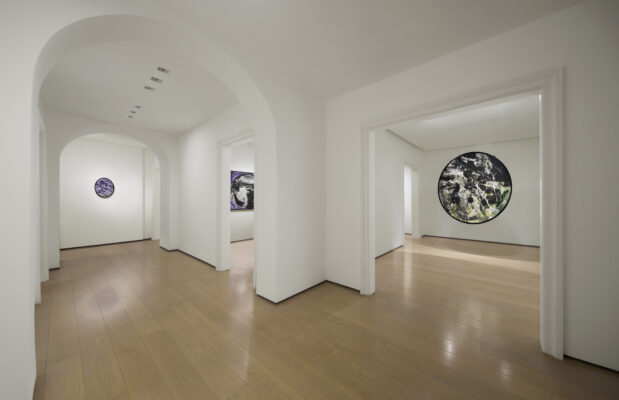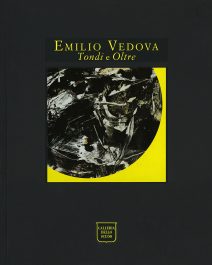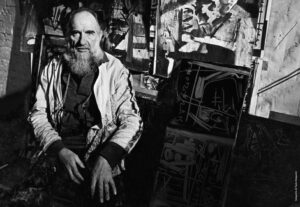Home / Exhibitions / Emilio Vedova Tondi and Oltre works 1985-1987
Emilio Vedova, Tondi e Oltre
works 1985-1987
in collaboration with Fondazione Emilio e Annabianca Vedova
05.03.2022 — 23.07.2022
Emilio Vedova
Tondi e Oltre
in collaboration with Fondazione Emilio e Annabianca Vedova
05.03.2022 - 23.07.2022Show introduction
An exhibition devoted to Emilio Vedova is scheduled from 5 March next at Galleria dello Scudo in Verona. It focuses on a selection of about thirty works never shown before produced between 1985 and 1987, when the distinctive feature of his painting became that “circle-shape” that he himself termed “a possible dimension of ‘other’ feeling.”
The exhibition presents the Tondi and Oltre, united by the recurrent presence of the circular element. In the former case it is the format of the support, in the latter the perimeter of the painting inscribed in a square canvas. The exhibition now documents the different solutions adopted, varied by the use of materials, techniques and dimensions. Both in the large measure – almost three meters in diameter – and the more compact one of the smaller works of 1987, the gestures open up into a boundless variety of interventions, in which furrows, incisions, layerings, sketches and clots of pigment combine in an endless repertoire with a powerful pictorial intensity. Vedova sketched, painted and glued without imposing an order on himself, rather challenging and renouncing the supremacy of the centre. In the Tondi he is the mobile centre of gravity within the work, in the Oltre he bounds the perimeter of the tondo in the square surface, so heightening the ambiguous conflict between “circle/square, square/circle.”
In the artistic tradition the circle is perfection and cosmic harmony, the symbol and principle of a superior, sacred order. For the mature artist it became the reason and limit of an experiment, in other words the shape in which to formulate a new attempt. “When I took the circle by the throat I did it almost as a kind of challenge against this sacred figure ‘Sancta sanctorum’. Michelangelo's tondo, Raphael's tondo!... To see whether this form could be prostrated, involved in this our laceration, whether something could still be done somehow within it - precisely because I was now facing perhaps the figure I found most prohibitive. Because the circle is always the circle of ideology. And the circle of Christianity. It is the circle of humanism. And the circle of the mandala.”
After his great paintings of the early 1980s, the artist explored a new creative path. “Slowly Emilio Vedova developed the idea of exploring another geometric form that was intriguing him insistently: the tondo. His was not a formal choice or due to some possible commission, but the beginning of a profound reflection that subverted the compositional hierarchies of his work together with its theoretical and poetic bearings. Vedova was fully aware of the inviolable perfection of the tondo, which no pictorial desecration could compromise, just as no effort could cancel that edge,” points out Fabrizio Gazzarri, Director of the Archive and Collection of the Fondazione Emilio e Annabianca Vedova, as well as the exhibition’s curator, in his essay in the catalogue.
“Words can hardly express what the studio was like with Vedova at work at such times. I often saw him in front of one of his Tondi just completed, bending sideways, standing on tiptoe, turning and keeping tilting his head, as if wanting to enter it by rotating on himself.” Since 1982, with the tribute to Tintoretto in Arbitrio - 3 (su Jacopo), continues Gazzarri, “the artist had questioned the orthogonality of painting in relation to the horizontality of its base. On that occasion, just before starting the work, he hung the square canvas, still blank, on the wall in the form of a rhombus, then painted it in that position. His urge to shift the surface of the canvas from the fixity of the horizontal base revealed the start of an imminent separation from that sort of anchoring to the ground that had been the foundation of his work until then.”
So the circular form clearly stemmed from a desire to move away from the normal point of view and experiment with new ways of defining the pictorial space. In this respect, he offered some illuminating observations on the works now on display during an interview published in “Domus” in 1991: “This is the borrowing of the most prohibitive form,... the circle, the point that closes everything, the centrality of centrality... to make it a non-centred region, a region of transit... There are still situations that overlap, in these signs of '85, signs between anger and the knife, and magmatic territories. But this articulation has always been there, within me, apart from the geometric moment.”
The exhibition includes some works on paper from 1985, produced in the period when Vedova was preparing to take part in the exhibition Italia aperta at the Fundación Caja de Pensiones in Madrid, which marked the public debut of the first Dischi, and in particular the cycle Non a caso ’85.
The exhibition, organised in collaboration with Fondazione Emilio e Annabianca Vedova, is documented by a catalogue published by Galleria dello Scudo. It includes an introduction by Alfredo Bianchini, President of the Foundation itself, and a text by the curator Fabrizio Gazzarri, together with the illustration all the works on display, photographed for the occasion by Agostino Osio. An appendix reconstructs the exhibition history of the Tondi and Oltre from 1985 on.
